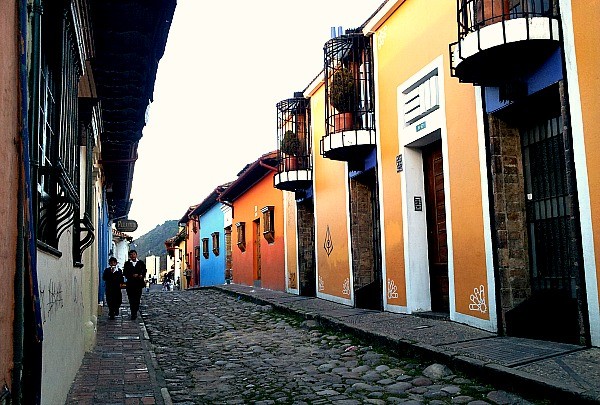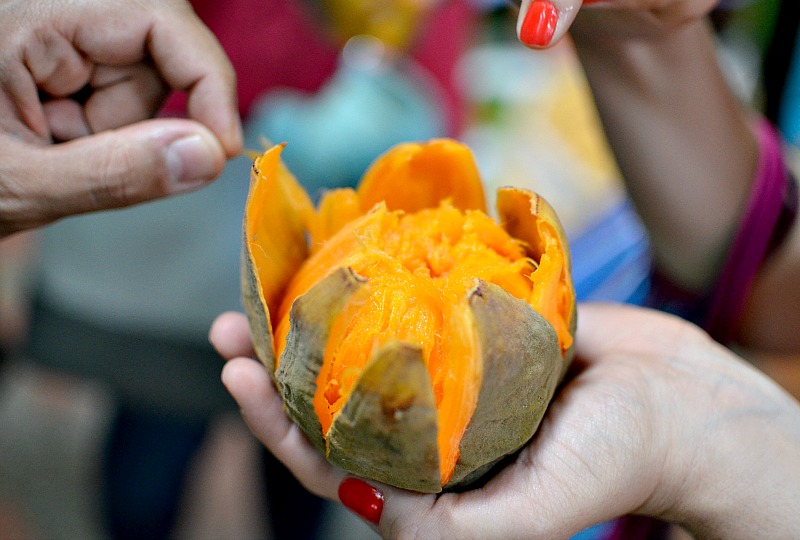

I realise I’m terribly unprepared for my four-day trek to the La Ciudad Perdida, The Lost City, in the Sierra Nevada as soon as I get into the van that’s taking us to the starting point.
How do I know? Well for starters, when I get into the van and introduce myself to the guide and a Polish girl who’s also doing the trek, I notice a backpack next to me with a Machete strapped to the side of it. It’s the Polish girl’s and she’s taking this hike seriously!
“Just in case,” she says when she notices I’ve spotted it.
Just in case what? I worry.
At this point, a list of things I’ve packed for the journey buzz through my head. Swimmers, check. Quick-dry hiking clothes, check. Insect repellent, check. Head torch, check. Machete? Nope. It wasn’t on the list.
“Your backpack is so small,” the Polish girl points out.
“I like to pack light,” I lie.
My bulging backpack at the hostel in Santa Marta proves otherwise.
After two hours of driving through bumpy dirt roads, we arrive at the aptly named town of Macheté. I can surely buy a Machete here if I need one, I think desperately.
We meet up with the rest of the tour group and I quickly notice that no one else has packed a machete. Phew!
After a quick lunch we set off into the scrub with happy faces, big smiles and a sense of adventure. Our guides assure us that day one is the most difficult – most difficult, not because of the terrain or because of the distance covered, but simply because, they explain, it’s the first day on the trail and people are generally not used to walking for three or four hours at a time.
But within 40 minutes we had rock-hopped our way across rivers and reach a section where we can stop for a swim. We strip down to our swimmers and jump in. By day two the trails get steeper and less defined. It’s rocky, more precarious, there’s more mental concentration required with each step, more areas where three-points of contact are necessary. But the landscape is overwhelming.

There are four indigenous groups in the area we walk through and it’s thought that perhaps they were all part of the one group pre-Spanish colonisation but were separated when they fled into the mountains to escape the Spanish conquistadores. There are roughly 20,000 Kogis in the area and it’s not uncommon to see them walking along the trek, either through the jungle or along the same trails.

Catching a glimpse of them through the scrub, I feel like some strange alien being from the future in my trekking boots, light-weight technical fabrics and light-reflective cap, as they walk by in their simple white clothes, the women not even permitted to wear shoes.

John, our guide, comes up to me that night and asks if I can translate what the Kogi leader says to our group. At that moment I forget every Spanish word I have ever learnt.
We sit at a table lit by candles around the leader. He lets us know about the rights of passage from boyhood to manhood, marriage, family life, sex, women and men, children, their peaceful nature and what they think about tourism in La Ciudad Perdida – they seem to be ok with it now that they have some control over it.
Then I ask how Kogis maintain their spiritual connection with Madre Tierra or Mother Earth? Through positive thoughts, he says, sharing a grin. This turned out to be good advice over the following three days, as they proved to be the most difficult of the trek to The Lost City.
I go to bed feeling excited and grateful, with a full belly and heavy with quiet exhaustion from two days of walking. But it’s not a restful sleep because I wake up at all hours of the night scratching and itching and trying to ward off what seems to be hundreds of mosquitoes buzzing around my ankles. Even with long pants, insect repellent and mosquito nets, I am clearly the sweetest mosquito dessert going round.
The following day, it was clear from the colour and size of my leg that I’d had an allergic reaction to the bites. My leg is the size of a baby elephant’s and there are still three days and more than 14 hours of hiking left to do. Positive thoughts, I remember. It’ll be ok.

We walk on – through rivers, over rocks, up steep hills, down unforgiving declines, into deep forests, through the mud, over sand and slippery clay. We pass by humming birds, wild boar, snakes and our legs are nibbled at by fish as we wade through the river.
By the time we reach the camp site on the third day, I’m not sure if I can make it to the Lost City. I wake up the following morning with a throbbing pain, I can’t move my right foot, it’s bigger, fatter and now I have cankles too – I can’t tell my calves from my ankles. At this point, one of the other trekkers, a girl from London, notices my pain and comes up to me.
“Oh Sarah you better be careful, I once had a friend who almost had to get her leg amputated because of a mosquito bite,” she says matter-of-factly.
“Thanks,” I mumble. Positive thoughts.
We’re hiking in Colombia and at this point of the trek there are two river crossings, and it had been raining overnight so the water is high and rough. Our guide John insists on carrying me across both of them – over the slippery rocks, balancing precariously through white water. I am not going to lie, I have my eyes closed for a majority of the way across as I try desperately not to imagine ourselves falling on the slippery rocks into the river. We make it across.

John lags behind with me for the rest of the way to the city. Just past the river there is a very steep set of stairs. At the top is the Lost City. I climb them slowly and with each step closer to the city I become more and more emotional. I am close to tears. Then John says, “Estas bien?” Are you ok? “Si, estas cosas no puede ser facil, no?” I say. Yes, these things can´t be easy can they? We laugh. “Verdad,” he smiles and we keep walking silently.

What feels like hundreds of steps later, we reach the city. Lost and lonely, and with so much history and time deep within the soil that it was built upon. The guides start speaking and look at me to translate for the group. But I can’t. My brain has stopped working. I’m exhausted, mentally and physically. All I can concentrate on is standing upright. I sit down and look around to take in the beauty – the mountains, a distant waterfall and the circular foundations of a city that once was.






